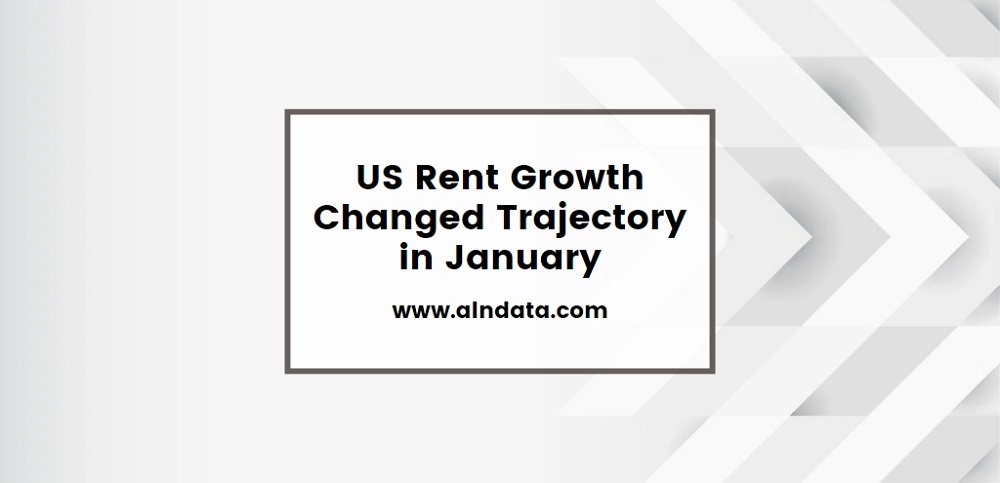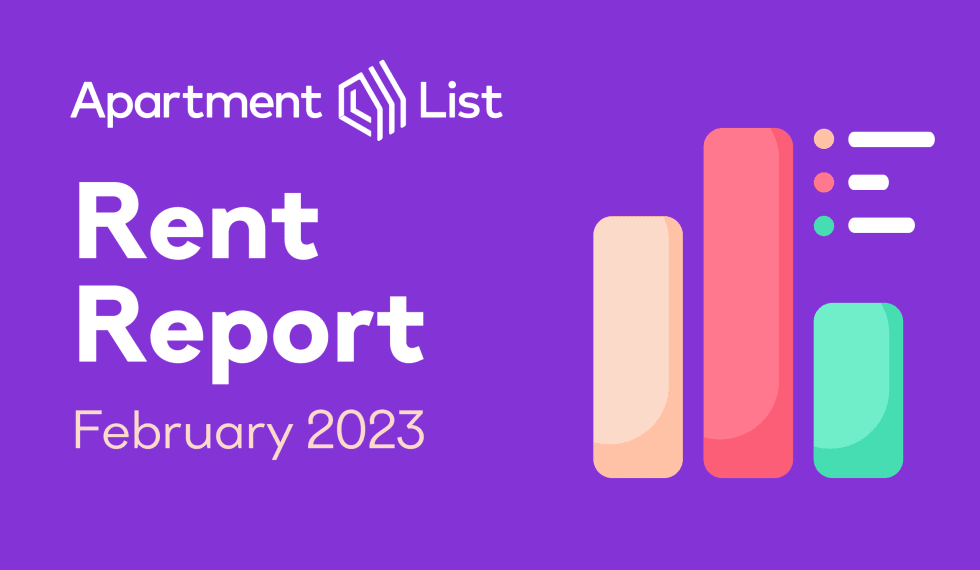Welcome to the April 2023 Apartment List National Rent Report. Our national rent index increased by 0.5 percent over the course of March, the second straight monthly increase and a slight acceleration over last month’s pace. This month’s increase is of a similar magnitude to the typical March price change that we saw in pre-pandemic years. After 2022 closed out with record-setting price declines, it appears that rental demand is rebounding in line with the usual seasonal trend.
ATTOM, a leading curator of land, property, and real estate data, today released its year-end 2022 U.S. Home Flipping Report, which shows that 407,417 single-family homes and condos in the United States were flipped in 2022. That was up 14 percent from 357,666 in 2021, and up 58 percent from 2020, to the highest point since at least 2005. The report reveals that the number of homes flipped by investors last year represented 8.4 percent of all home sales, also the largest figure since at least 2005.
Total construction starts rose 6% in February to a seasonally adjusted annual rate of $912.8 billion, according to Dodge Construction Network. During the month, residential and nonresidential building starts rose 11% and 9% respectively, and nonbuilding starts declined by 5%. For the first two months of 2023, total construction starts were 17% below that of 2022. On a year-over-year basis, residential starts were down 31%, nonresidential starts were off 14%, while nonbuilding starts gained 6%.
CoreLogic®, a leading global property information, analytics and data-enabled solutions provider, today released its latest Single-Family Rent Index (SFRI), which analyzes single-family rent price changes nationally and across major metropolitan areas. U.S. annual single-family rent growth continued to slow year over year in January, declining for the ninth straight month to 5.7%. Orlando, Florida posted the country’s largest annual gain for the third consecutive month, while Miami dropped out of the top three highest-growth markets for the first time since the summer of 2021.
ATTOM’s just released Q1 2023 U.S. Single Family Rental Market Report, which ranks the best U.S. counties for buying single-family rental properties in 2023, found that the average annual gross rental yield on three-bedroom properties (annualized gross rent income divided by purchase price) is projected to be 7.5 percent in 2023. According to ATTOM’s latest single family rental market analysis, that figure is up from an average of 6.7 percent in 2022 in those same markets and marks the first time since at least 2019 that the figure rose across the country.
The CoreLogic Home Price Insights report features an interactive view of our Home Price Index product with analysis through January 2023 with forecasts through January 2024. CoreLogic HPI™ is designed to provide an early indication of home price trends. The indexes are fully revised with each release and employ techniques to signal turning points sooner. CoreLogic HPI Forecasts™ (with a 30-year forecast horizon), project CoreLogic HPI levels for two tiers—Single-Family Combined (both Attached and Detached) and Single-Family Combined excluding distressed sales.
For homebuyers, affordability, job opportunities and outdoor amenities are major driving factors for relocation. Our previous analysis showed that homebuyers who relocated to another metro in recent years often chose metros adjacent to their current location and/or had a lower cost of living. Although homebuyers were weighing these considerations before COVID-19, the migration rate to cities featuring these factors grew during the pandemic. With the combination of low for-sale inventory, low interest rates and a shift to a more flexible working environment, more people moved out of expensive metros in search of affordability, outdoor amenities and warmer weather.
The share of single-family home purchases made by investors\[1\] held steady in the fourth quarter of 2022. After falling to 21% in June of last year, the share of investor purchases rose to 26% in September and has remained about the same since. Figure 1 shows that the investor share plateaued in the fourth quarter of last year at around 2 percentage points lower than its high of 28% in February 2022; however, this is still much higher than at any time pre-pandemic.
The CoreLogic Loan Performance Insights report features an interactive view of our mortgage performance analysis through December 2022. Measuring early-stage delinquency rates is important for analyzing the health of the mortgage market. To more comprehensively monitor mortgage performance, CoreLogic examines all stages of delinquency as well as transition rates that indicate the percent of mortgages moving from one stage of delinquency to the next.
CoreLogic®, a leading global property information, analytics and data-enabled solutions provider, today released its latest Single-Family Rent Index (SFRI), which analyzes single-family rent price changes nationally and across major metropolitan areas. Rent price gains declined in December for the eighth straight month on an annual basis, but the 6.4% national increase remained higher than pre-pandemic levels. Although major tech company layoffs are making headlines, a still relatively healthy U.S. job market is keeping rent prices elevated, with the national unemployment rate hovering near a decade low in December.
Housing prices have increased for over a decade. Following the fallout from the 2000s housing crisis, which ended in July 2012, home prices have posted year-over-year increases every month. As prices appreciated, the spread in housing costs across the country grew further apart. This level of dispersion hit an all-time high in July 2022, when the difference between the 40th most-expensive MSA and the 160th most-expensive MSA was $268,000.
Back in November of 2022 monthly national average effective rent growth for new leases fell into negative territory for the first time since 2020. At that time, the negative movement was most pronounced in primary markets. In December, negative growth spread into the larger secondary markets, referred to by ALN as Tier Two markets. With one month of 2023 data now in the books, January looked a little bit like an improvement in some ways, but average effective rent regression has not entirely disappeared.
The Dodge Momentum Index (DMI), issued by Dodge Construction Network, fell 8.4% in January to 201.5 (2000=100) from the revised December reading of 220.0. In January, the commercial component of the DMI fell 10.0%, and the institutional component receded 4.7%. “The Dodge Momentum Index weakened in January, after 10 consecutive months of gains. While planning activity slowed, the Index remains elevated, and the volume of projects remains steady,” stated Sarah Martin, associate director of forecasting for Dodge Construction Network.
The CoreLogic Home Price Insights report features an interactive view of our Home Price Index product with analysis through December 2022 with forecasts through December 2023. CoreLogic HPI™ is designed to provide an early indication of home price trends. The indexes are fully revised with each release and employ techniques to signal turning points sooner. CoreLogic HPI Forecasts™ (with a 30-year forecast horizon), project CoreLogic HPI levels for two tiers—Single-Family Combined (both Attached and Detached) and Single-Family Combined excluding distressed sales.
Welcome to the February 2023 Apartment List National Rent Report. Our national rent index fell by 0.3 percent over the course of January, marking the fifth straight month-over-month decline. This month’s price dip was notably more moderate than the record-setting declines we saw from October through December. That said, January’s decline was still sharper than the usual seasonal trend, signaling the continuation of a broader cooldown in market conditions.
The CoreLogic Loan Performance Insights report features an interactive view of our mortgage performance analysis through November 2022. Measuring early-stage delinquency rates is important for analyzing the health of the mortgage market. To more comprehensively monitor mortgage performance, CoreLogic examines all stages of delinquency as well as transition rates that indicate the percent of mortgages moving from one stage of delinquency to the next.
The nation’s overall mortgage delinquency rates have improved significantly over the last year, according to the latest CoreLogic Loan Performance Insights Report. Data shows the serious delinquency rate for October 2022 declined one percentage point from 12 months prior to 1.2%. Compared to the peak serious delinquency rate for mortgages in August 2020, the rate in October was down three percentage points, which was mostly driven by strong labor market conditions since the U.S. economy reopened.
CoreLogic®, a leading global property information, analytics and data-enabled solutions provider, today released its latest Single-Family Rent Index (SFRI), which analyzes single-family rent price changes nationally and across major metropolitan areas. Single-family rental price increases dropped to 7.5% year over year in November, with all four tracked price tiers posting lower gains than a year earlier. November marked the seventh consecutive month of annual deceleration, and while Florida metro areas continued to post the nation’s highest rental cost gains, other Sun Belt cities such as Phoenix and Las Vegas that formerly showed the highest rent increases are now at the bottom.
In the spring of 2020, downtown areas became unattractive places for many people because of the emergence of COVID-19. The economic shutdown meant that urban cores lost their lifestyle value, remote work meant they lost their commuting value and physical distancing stripped them of their social value. These factors, among others, led to a flight from dense urban areas, both to the suburbs and beyond.
Welcome to the first Apartment List National Rent Report of 2023. Our national index fell by 0.8 percent over the course of December, marking the fourth straight month-over-month decline. The timing of this cooldown in the rental market is consistent with the typical seasonal trend, but its magnitude has been notably sharper than what we’ve seen in the past. This suggests that the recent swing to falling rents is reflective of a broader shift in market conditions beyond seasonality alone.






























































